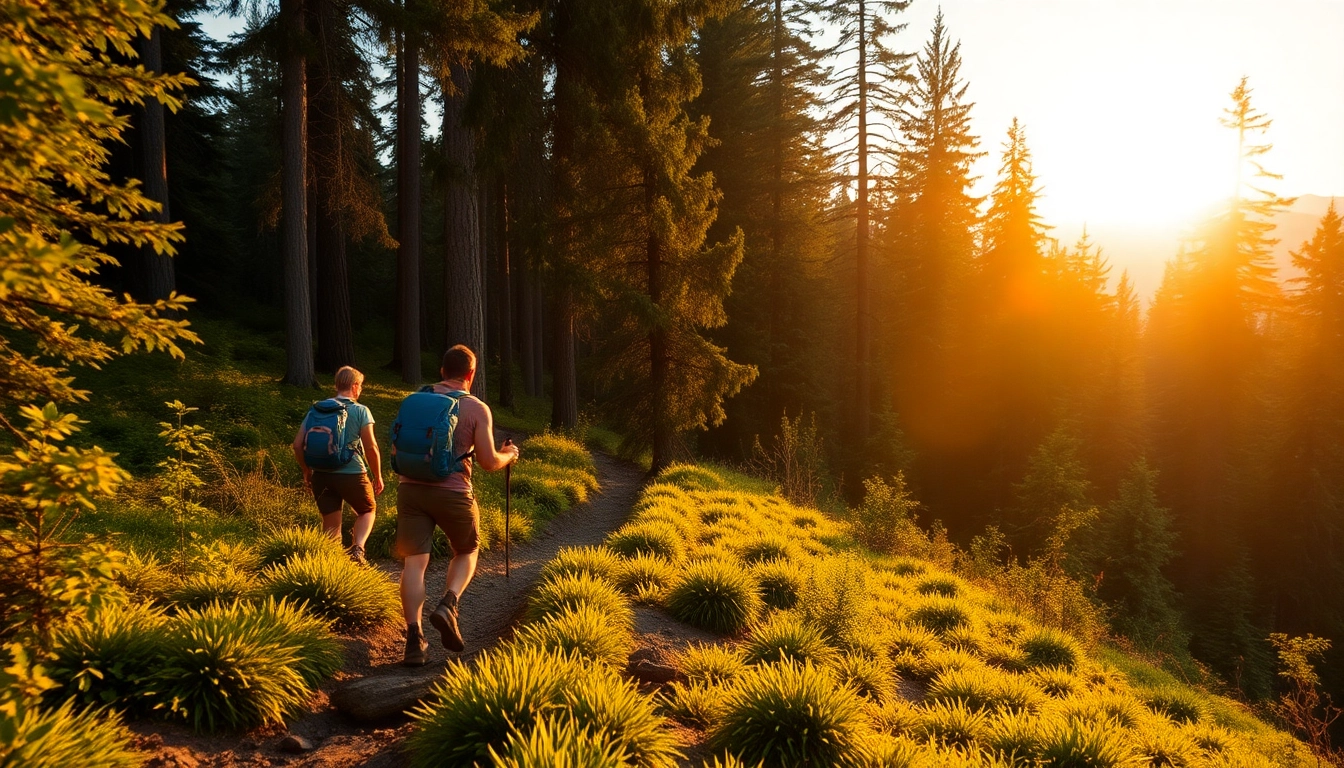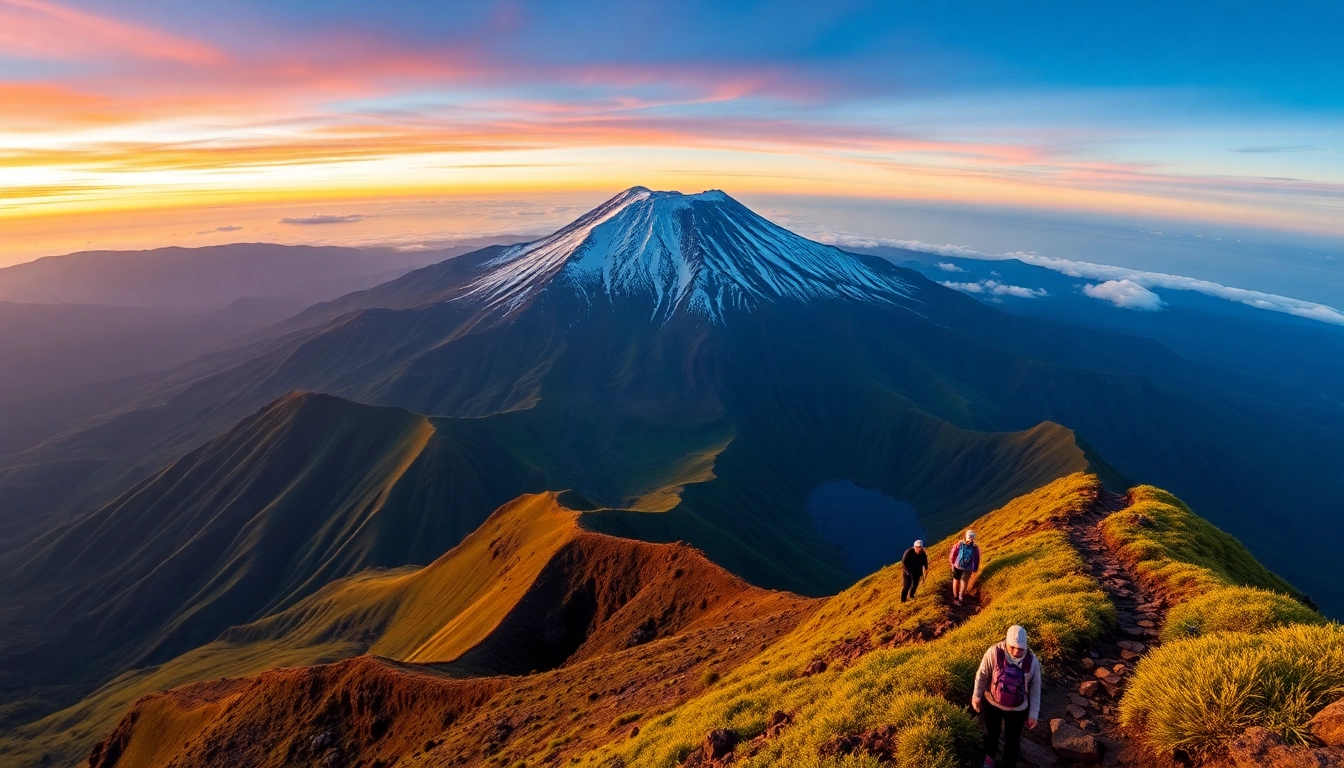Introduction to Hiking in Indonesia: Nature, Culture, and Adventure
Indonesia, an archipelago comprising over 17,000 islands, is renowned for its breathtaking landscapes, vibrant cultures, and diverse ecosystems. For outdoor enthusiasts, especially those passionate about hiking, the country offers a myriad of trails that traverse lush rainforests, towering volcanic peaks, and pristine beaches. Whether you are a seasoned trekker or a casual hiker seeking a weekend escape, Indonesia’s terrain promises an adventure filled with natural beauty, cultural richness, and physical challenge. This comprehensive guide explores everything you need to know to embark on memorable hiking journeys across Indonesia, emphasizing safety, preparation, and responsible tourism.
What Defines Hiking and Its Benefits in Indonesia
The Essence of Hiking
At its core, hiking is a form of active outdoor recreation involving long-distance walking across trails or pathways in natural environments. Unlike casual walks on city sidewalks, hiking challenges individuals with varied terrains—including steep inclines, rocky paths, and uneven surfaces—demanding a certain level of physical fitness, endurance, and mental resilience.
In Indonesia, hiking commonly involves traversing mountains such as Rinjani in Lombok or Bromo in East Java, exploring forests like Gunung Gede Pangrango National Park, or strolling along coastal pathways on islands like Bali and Lombok.
The benefits of hiking go beyond physical health. Engaging with nature has been shown to improve mental clarity, reduce stress, and foster a sense of connection with the environment. For instance, a study published by the U.S. National Park Service highlights that regular hiking enhances cardiovascular health, boosts mood, and encourages mindfulness. Moreover, in Indonesia, hiking is intertwined with cultural practices—many trails are sacred sites, reflecting spiritual significance and community traditions.
Discover more about the true essence of hiking and how it can transform your well-being while immersing you in Indonesia’s natural splendor.
The Rich Natural Landscapes for Hiking Enthusiasts
Volcanoes and Mountain Ranges
Indonesia is home to over 130 active volcanoes, making it a paradise for hikers seeking volcanic adventures. Mount Rinjani, the second-highest volcano in Indonesia, offers a challenging trek with rewarding views of its crater lake, hot springs, and surrounding landscapes. Climbing this dormant volcano typically takes 2-3 days, providing a deep connection with the earth’s raw power.
Rainforests and Biodiverse Ecosystems
The lush rainforests in national parks like Gunung Gede Pangrango or Tanjung Puting offer trails that meander through dense canopies, home to diverse flora and fauna such as orangutans, gibbons, and exotic orchids. Trekkers can enjoy birdwatching, waterfall visits, and immersive encounters with endemic species.
Coastal Trails and Coral Reefs
Coastal hikes along Bali’s beaches, Lombok’s coastal cliffs, and the islands of the Komodo Archipelago provide stunning seascapes, with opportunities to witness marine life from above and below water. These trails often include visits to traditional fishing villages, mangroves, and coral garden explorations.
Protected Areas and UNESCO Sites
UNESCO World Heritage sites such as Ujung Kulon National Park and Borobudur, the historic Buddhist temple complex, are accessible for hikers interested in combining historical exploration with physical activity. Such sites offer a blend of natural beauty and cultural richness.
Historical and Cultural Significance of Hiking Regions
Mount Rinjani and Local Legends
Rinjani holds cultural importance for the Sasak people of Lombok, who consider it sacred. The ascent is often accompanied by local legends about ancestral spirits and spiritual healing. Hikers engaging with the mountain contribute to susta inable tourism that sustains local communities.
Volcanoes and Spiritual Practice
Many Indonesian volcanoes, including Mount Bromo and Kawah Ijen, are active and revered as spiritual symbols. Rituals, ceremonies, and traditional offerings often take place at volcanic craters, adding an element of cultural reverence to hiking adventures.
Preserving Heritage Through Trails
Trails connecting historical sites and traditional villages serve as conduits for cultural exchange and heritage preservation. Responsible hiking ensures these regions maintain their cultural integrity while welcoming visitors.
Preparing for a Safe and Enjoyable Hiking Experience
Choosing the Right Hiking Gear and Equipment
Proper gear is essential for safety and comfort during Indonesian hikes. Essential items include durable hiking boots with ankle support, moisture-wicking clothing suitable for tropical climates, lightweight backpacks, hats, sunglasses, and high-SPF sunscreen. Additionally, carrying a multi-tool, headlamp, and navigation devices such as GPS or offline maps ensures preparedness.
Camping gear may be necessary for multi-day treks, including lightweight tents, sleeping bags suitable for variable weather, and portable cooking equipment. For safety, include first aid kits, insect repellent, and hydration systems like water bottles or hydration bladders.
Planning Trails and Understanding Terrain Challenges
Prior to embarking, research trail difficulty, distance, altitude gain, and estimated duration. Indonesia’s diverse terrains require understanding specific challenges—steep ascents in volcanic areas, muddy paths in monsoon seasons, and temperature variations at high elevations. Consulting local guides or online trail reviews can provide valuable insights.
Fitness Tips and Safety Precautions for Beginners
Physical preparation includes regular cardiovascular exercise, strength training, and acclimatization to elevation changes. Hydration and nutrition are vital; carry high-energy snacks like nuts and dried fruits. Always inform someone of your itinerary, carry emergency contacts, and respect weather conditions to avoid hazards such as sudden storms or volcanic activity alerts.
Best Hiking Trails in Indonesia for All Skill Levels
Top Scenic Routes in Lombok and Nearby Islands
Lombok’s Rinjani Trek and the coastal trails of Gili Islands offer diverse experiences for hikers of different skill levels. Rinjani’s summit challenge attracts advanced hikers, while Gili’s nearby beaches and coral reefs provide relaxed walks suitable for families.
Hidden Gems and Off-the-Beaten-Path Trails
Explore lesser-known trails like the Mahawu Crater in North Sulawesi, or the waterfalls of Sekumpul in Bali. These routes often afford solitude, untouched nature, and authentic cultural encounters. Engaging local guides enhances safety and enriches the experience.
Guided Tours vs. Independent Hiking: Pros and Cons
Guided tours ensure safety, local expertise, and logistical support, especially on challenging or remote trails. Independent hiking offers flexibility, cost savings, and deeper immersion. Combining both approaches can optimize your Indonesian hiking adventure.
Enhancing Your Hiking Experience with Sustainability and Respect
Leave No Trace Principles for Responsible Hiking
Preserving Indonesia’s natural beauty requires adherence to Leave No Trace principles: packing out all trash, minimizing campfire impact, staying on designated trails, and respecting wildlife. These actions ensure future generations can enjoy pristine landscapes.
Supporting Community-Based Eco-Tourism Initiatives
Engage with local communities by choosing eco-friendly tour operators, staying in homestays, and purchasing local crafts. Such support provides economic benefits, promotes cultural exchange, and encourages conservation efforts.
Preserving Natural Habitats and Local Cultures
Educate yourself about the cultural significance of sites, avoid damaging flora, and participate in culturally respectful practices. Conservation efforts are more effective when tourists act as ambassadors for responsible engagement.
Tracking Your Progress and Staying Motivated
Using Technology and Apps for Trail Navigation
Modern technology enhances safety and engagement. Apps like AllTrails, Gaia GPS, or Komoot provide detailed maps, trail reviews, and GPS tracking. Offline capabilities are crucial due to limited connectivity on remote trails.
Monitoring Health and Performance Metrics
Wearable devices can track heart rate, altitude, pace, and calories burned, helping you tailor your physical effort. Monitoring these metrics ensures you stay within safe limits and improve over time.
Sharing Experiences and Building a Hiking Community
Sharing photos, stories, and trail reviews on social media platforms fosters a sense of community. Joining local hiking groups or online forums connects you with like-minded enthusiasts, opening opportunities for new adventures and knowledge exchange.

